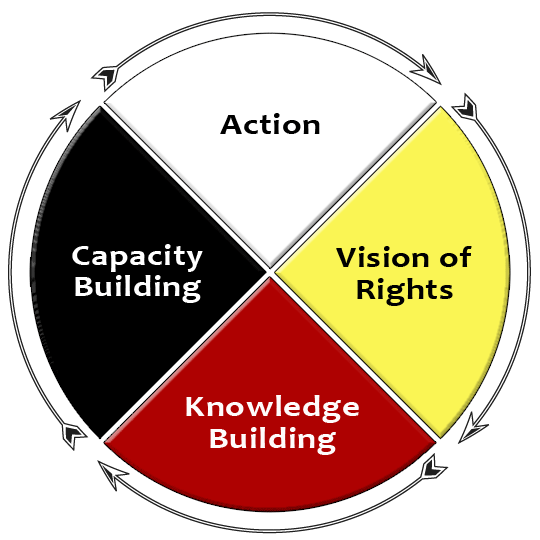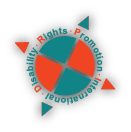Expanding the Circle
The Context
Aboriginal people are diverse in terms of cultures, languages and locations. Yet they share common legacies and experiences of colonialism, such as oppression from the Indian Act and the multigenerational effects of the residential school system. Aboriginal people also face a disproportionate burden of disability and less local access to culturally appropriate services. Often, Aboriginal people with disabilities have to move away from their families and communities just to access the services that enable equal enjoyment of their human rights. There needs to be more awareness of the human rights experiences of Aboriginal people with disabilities. Too often their perspectives on their life circumstances have been neglected.
Disability rights monitoring – the collection, analysis and mobilization of information about the human rights circumstances of people with disabilities – can raise awareness of the human rights experiences of Aboriginal of people with disabilities and thereby ensure the equal enjoyment of human rights among this group. In order to be effective, disability rights monitoring efforts must directly and centrally involve Aboriginal people with disabilities and their communities. Disability rights monitoring tools and training resources that are relevant to Aboriginal communities and cultures must also be developed.
The Project
The ‘Expanding the Circle’ project is a 3 year SSHRC-funded partnership that will work collaboratively with Aboriginal people with disabilities in Ontario and their organizations to promote disability rights monitoring initiatives in Aboriginal communities. This partnership of Aboriginal community groups, universities, government representatives and scholars from diverse backgrounds and disciplines will develop a shared vision of disability as well as culturally appropriate disability rights monitoring tools. Aboriginal people with disabilities and members of Aboriginal community organizations will then be trained to use these tools to conduct disability rights monitoring in their own communities, and will be empowered to continue monitoring disability rights beyond the duration of this project.
The information gained from these community-based disability monitoring efforts will be disseminated in multiple languages through community human rights reports, multi-media projects, open access publications and policy briefs in order to raise awareness of the need to change public policies in ways that promote the human rights of Aboriginal people with disabilities. Although initially piloted in Ontario, this partnership will provide the basis for a larger study that can lead to creating a national coalition on disability rights and monitoring directed by Aboriginal communities.
The project can be conceptualized in four, interconnected stages:
- Envisioning Rights: Bringing together multiple visions and understandings
- Building Knowledge: Documentation of the current knowledge of the situation of Aboriginal people with disabilities in Canada
- Building Capacity: Disability Rights Education and Monitoring
- Action: The knowledge that has been gained will be taken up by our partners to advocate for changes to policies and to scale up the monitoring practices

Visit our 'People' page to learn more about who is currently involved with the project. If you would like more information about the project or are interested in participating in the 'Expanding the Circle' project, please contact Marcia Rioux, principle investigator for the project and Co-Director of Disability Rights Promotion International.
